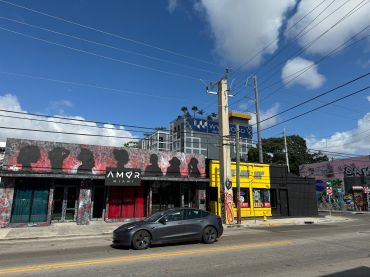New York City’s Multifamily Market Poised for Turnaround in 2024
Here's why
By Lev Mavashev December 13, 2023 9:00 am
reprints
This year has been remarkably challenging for New York City’s multifamily investment sales.
After a prolonged period of rate hikes, the collapse of Signature Bank, a near-miss for regional banking in general, and political posturing over a housing crisis exacerbated by a rent regulations and a development logjam, we saw transaction activity sink 58 percent for the year as of third quarter as buyers and sellers couldn’t find common ground.
However, as we close out the year, based on some recent deal activity we are currently seeing, my money is on 2024 being the year NYC multifamily turns the corner on this cycle.
Entering 2023, we quickly burned through the hot streak of deals lingering from the prior year as NYC reveled in a post-COVID bump that brought New Yorkers back from their pandemic hideouts and returned rents to an upward trajectory. The hangover kicked in as the second quarter opened with the collapse of Signature Bank, which spread contagion fears across the capital markets.

More clouds gathered over the summer as the Federal Reserve raised its key interest rates for the 11th time in 17 months. The threat of an all-out commercial real estate collapse sent investors into retreat. A pullback by institutional investors all but obliterated any larger multifamily deals as price transparency continued to elude the market.
Trying to close any deal in a market in constant flux is extremely difficult. We saw several transactions collapse in a seesaw battle with retreating debt and capital scarcity. Selling rent-stabilized buildings was nearly impossible, as cash flow kept on decreasing, especially in the new high interest rate environment.
Market-rate buildings achieving consistently higher rents were a preferred asset class in 2023. As political debate rages over a new 421a tax abatement, new housing developments stalled. Already hamstrung by hard-to-get financing, developers had no incentive to build housing. With no new supply, those market-rate rents continued to rise — and will continue to rise in 2024. Frankly, even if Mayor Eric Adams’s most recent promise of building a “City of Yes for Housing” comes to fruition, it will likely be years before supply catches up to demand.
With a recent Yardi Matrix report ranking New York City among the top multifamily markets in the nation, driven mainly by year-over-year forecasted rent and job growth, we expect even greater investor demand in the city’s market-rate properties, especially from institutions. Also, properties with a near-term expiring tax abatement were the asset of choice among value-add investors confident in the fundamental strength of the New York multifamily market and their ability to achieve long-term future gains.
Historically, New York has consistently overperformed in its economic recovery. That appears to be the case now. The city added 1 million jobs, brought an estimated 61 million tourists back and attracted over 9,000 new businesses during the 12 months ending March 31, 2023. This resiliency continues to attract investment from both domestic and foreign investors, especially for new multifamily buildings with a 35-year tax abatement, a rare but coveted asset in today’s market.
Indeed, even as geopolitical tensions fan headwinds, New York’s fundamentally strong economy promises to shoulder the brunt of an unprecedented shift in the office market that is forcing the industry to rethink the future. 2024 promises to be the year for action on zoning overhauls that enable office-to-apartment conversions, increased floor-area ratios (FAR) that support residential density, and the reinstatement of tax incentives that promote housing development.
The challenges are myriad, but there is a realization that the new reality is one of high interest rates and tightened capital availability. While it may not be the hoped-for landing, the certainty and stability of interest rates now as compared to the past two years is something every investor can live with, and, already, we are starting to see signs of an increase in deal velocity.
Foreign investors and institutional capital, overweight with office and retail, are already seeing the opportunity in the New York multifamily market and are pivoting to the sector where forward fundamentals point to a runway for rental growth and an opportunity to take advantage of pricing alignment between sellers and buyers in 2024.
According to The Real Estate Roundtable, foreign investment in U.S. commercial real estate totaled $92 billion in 2022, of which $27.3 billion was in multifamily housing. I think that allocation into multifamily will grow. Currently we are working with foreign investors from Argentina, Japan and France all comfortable with sub-6 percent cap rates on market-rate properties that, a few years ago, were trading at under 4 percent.
Rent-stabilized buildings may still prove to be challenging throughout 2024. However, we’ve seen a surge of interest from local private owners who will continue to be interested in slowly growing their rent-regulated portfolios as prices are down 40 to 50 percent following the 2019 rent law changes, and now interest rates are expected to decrease. Speculators, too, are now circling for deals they can later either refinance or sell when interest rates recede later this year.
The Fed’s signaling of a pause in rate hikes — perhaps even a basis point reduction — will bring capital and buyers off the sidelines with a certain level of confidence in acquisitions that will spur activity in the market. Investors cannot be on the sidelines forever, and I believe we are close to the tipping point, where increased deal velocity will reshape the market over the next 12 months. This activity will also allow lenders to reset their underwriting and to work with investors to create value.
Cap rates won’t dig us out of the pandemonium, but stability, clarity and transaction velocity will. The storm clouds are clearing and I think we are all ready to chart a new course through this new market landscape. There may still be quicksand in the trenches, and we still might see prices decline, but I believe 2024 will bring a firmer footing that will allow the market to recalibrate at a pace that works for the world we’re living in now.
Lev Mavashev is a principal at Alpha Realty.


